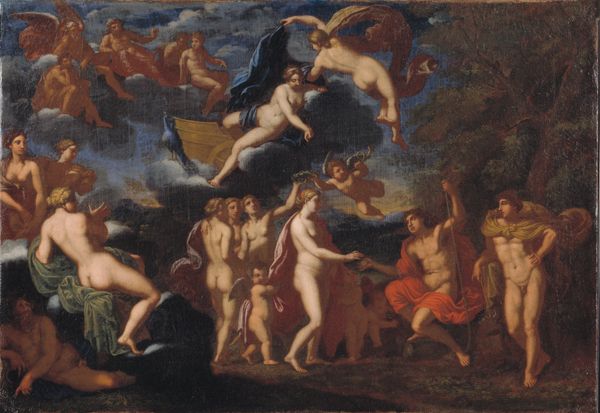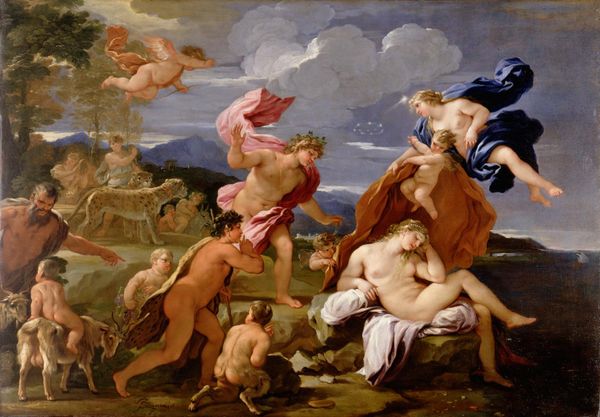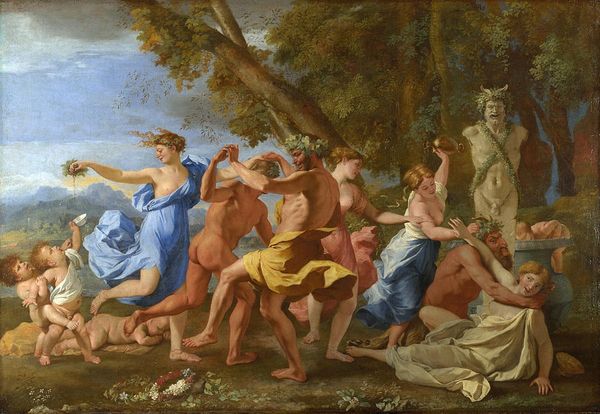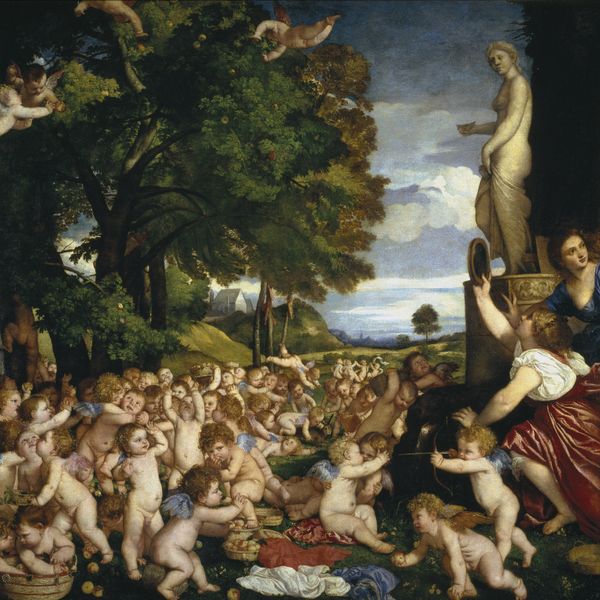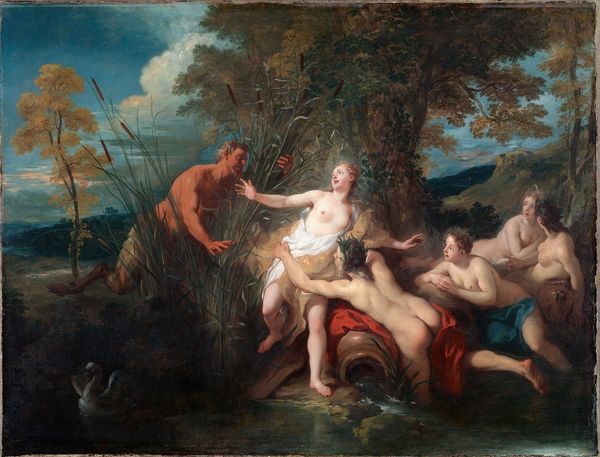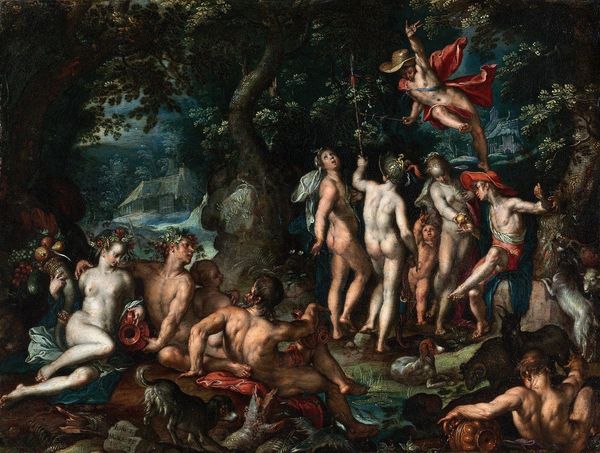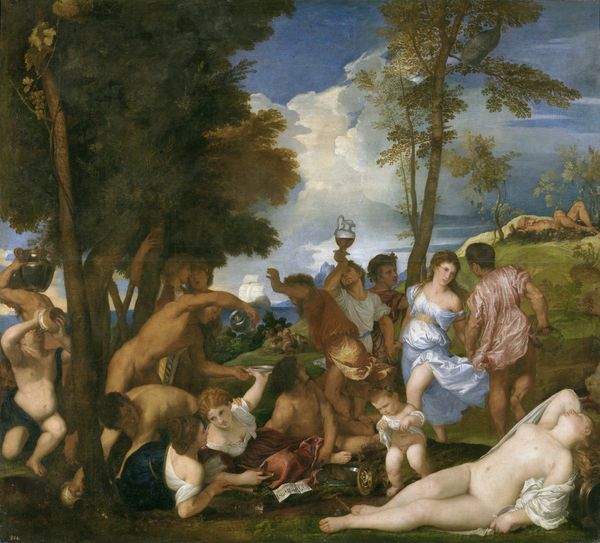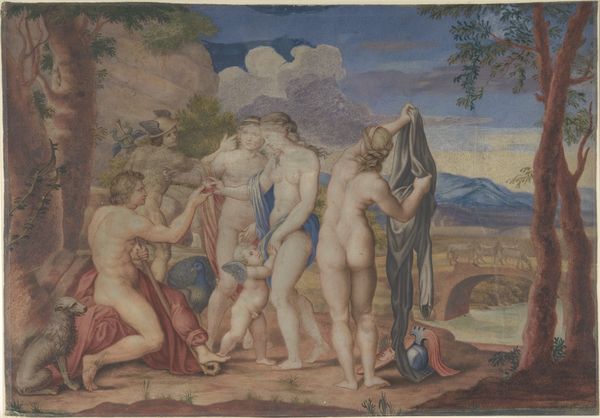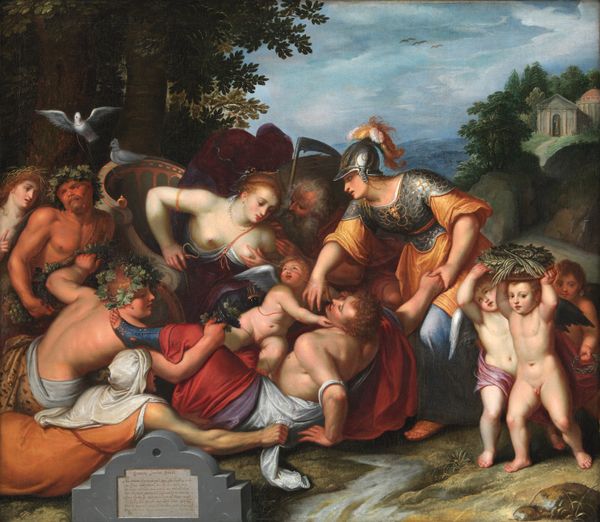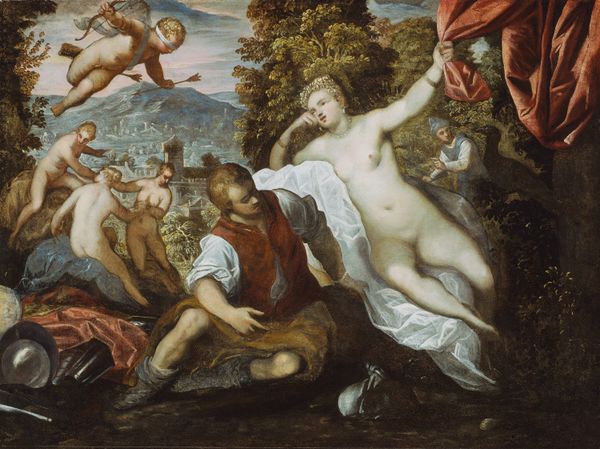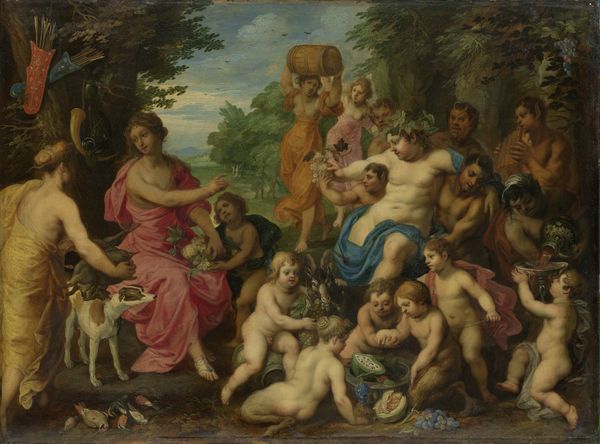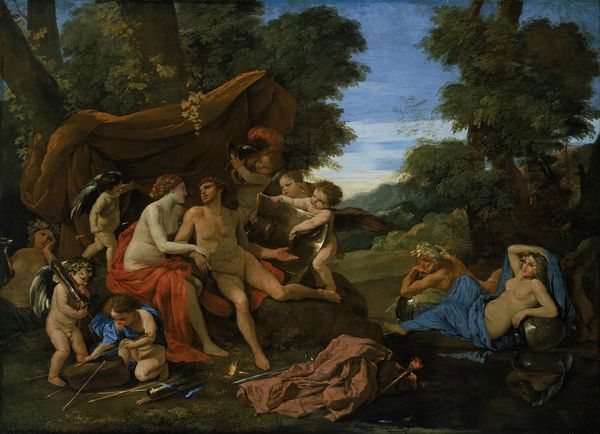
Dimensions: 176.5 x 191 cm
Copyright: Public domain
Do you believe in love at first sight? 💝👀 The oil painting Bacchus and Ariadne was created by the Italian Renaissance artist Titian in 1523. Titian is renowned for his use of vibrant colour, exemplifying the style of the Venetian School. 🖌️ Bacchus and Ariadne forms one of a series of mythological paintings created for Alfonso d’Este, the wealthy Duke of Ferrara in Northern Italy. These paintings were originally displayed in his magnificent Ferrara palace. Alfonso d’Este originally tasked Raphael (1483-1520) with painting this scene. When Raphael died without completing the assignment in 1520, the commission was transferred to Titian. This painting depicts the first meeting of Bacchus, the Greek god of wine and festivity, and Ariadne. In Greek mythology, Ariadne was a Cretan princess who was abandoned on the island of Naxos by the hero Theseus. Zoom in to the seascape which occupies the left background of the work. Can you see Theseus’ ship sailing away across the horizon? ⛵️ Here, Titian illustrates the moment that Bacchus first encounters – and falls in love with – Ariadne. Swathed in bold pink cloth, he leaps from his chariot towards the princess. The fabric drapery swirls behind his figure, emphasising his dynamic movement. To the right of Bacchus, Titian has depicted an energetic crowd of satyrs (male nature spirits, half-man half-goat) and nymphs (nature goddesses). These figures are each depicted in grand, gestural poses that lend the painting a lively dynamism. 💨 The colouring of this painting is especially striking. Which shade stands out the most to you? Titian used the purest and highest quality pigments to build such brilliant shades. This is especially visible in the bold blue skyline and Bacchus’ pink cape, which is further emphasised by areas of shadow (chiaroscuro). 🎨 Bacchus and Ariadne (1523) is a flurry of movement and spirited colour on a monumental scale; it measures almost two metres in width. The work epitomises the intense High Renaissance interest in the classical world. 🏛️ Editor: Lucy Jude Grantham
